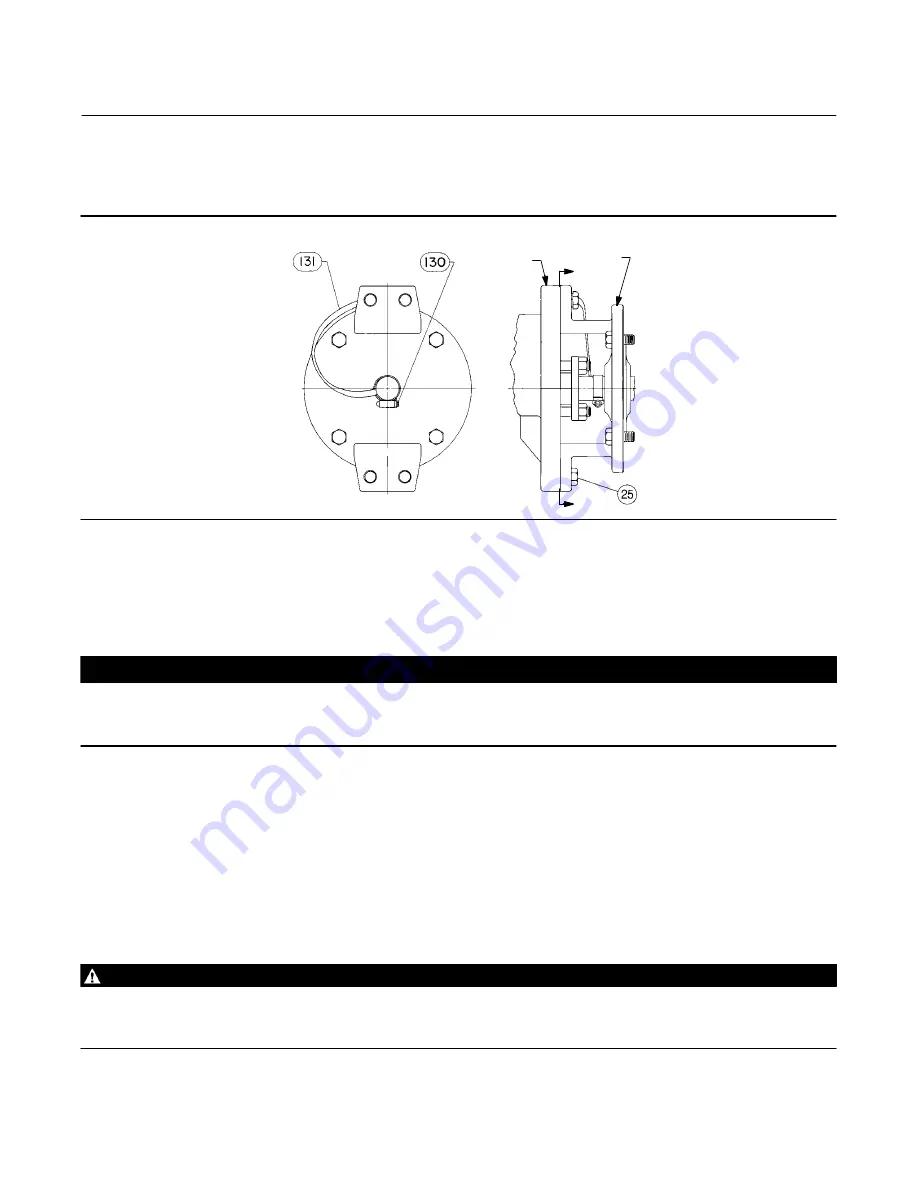
Instruction Manual
D104548X012
V200U Valve
May 2020
5
7. Be certain the valve and adjacent pipelines are free of any foreign material that could damage the valve sealing
surfaces.
8. Be sure the pipeline flanges are in line with each other.
Figure 2. Optional Shaft‐to‐Body Bonding Strap Assembly
VALVE
BODY
ACTUATOR
A
A
VIEW A‐A
37A6528‐A
A3143‐2
Installing V200U Valves
1. To avoid potential interference with the valve outlet end pipe flange, the V200U ball should be in the closed
position prior to installation. Install the V200U valve using long studs to connect the two pipeline flanges. Refer to
figure 3 for the length of studs required based on the mating pipeline flange pressure class. Lubricate the studs with
anti‐seize lubricant.
CAUTION
For DN 100, 200, and 250 (NPS 4, 8, and 10), damage to the ball (key 2) could occur if the downstream piping interferes
with the ball rotation. Prior to installing the valve body between adjacent flanges, reference dimension P in table 4 and
measure carefully to ensure the ball will rotate without interference.
2. Install two studs in the flanges before you place the valve in the line. Place the two studs so they will contact the
line‐centering features at the bottom of the valve body.
3. Insert appropriate flange gaskets that are compatible with the process fluid.
4. Place the valve on the two studs. Install all remaining studs. Measure carefully to be sure the valve is centered on the
pipeline flanges, and tighten the flange stud nuts. Tighten the nuts in a criss‐cross sequence to be sure the flange
gaskets are properly torqued.
5. Connect pressure lines to the actuator as indicated in the actuator instruction manual. When an auxiliary manual
actuator is used with a power actuator, install a bypass valve on the power actuator (if one is not supplied) for use
during manual operation.
WARNING
Personal injury could result from packing leakage. Valve packing was tightened before shipment; however the packing
might require some readjustment to meet specific service conditions. Check with your process or safety engineer for any
additional measures that must be taken to protect against process media.






































